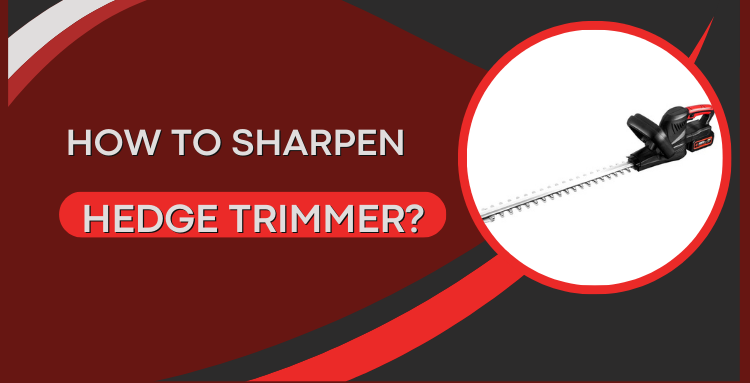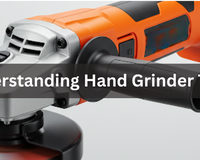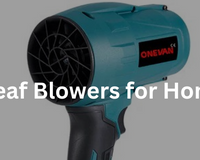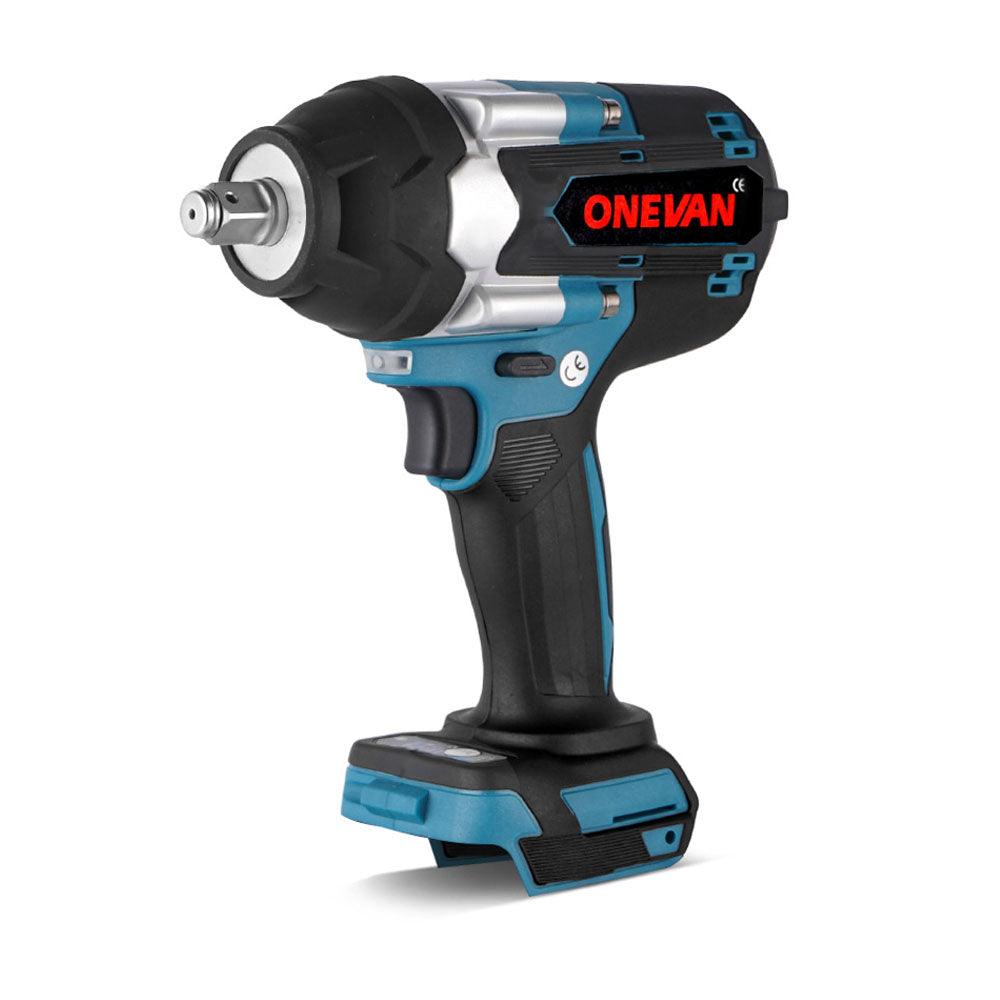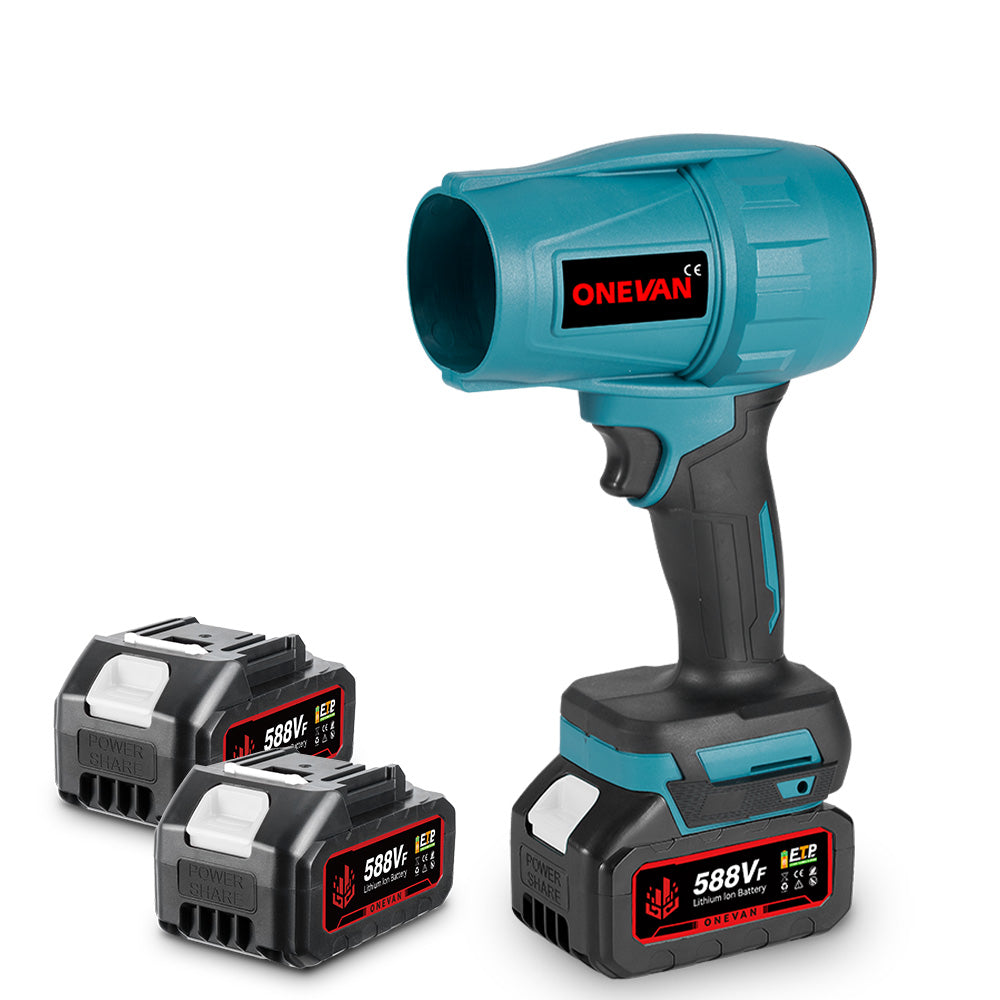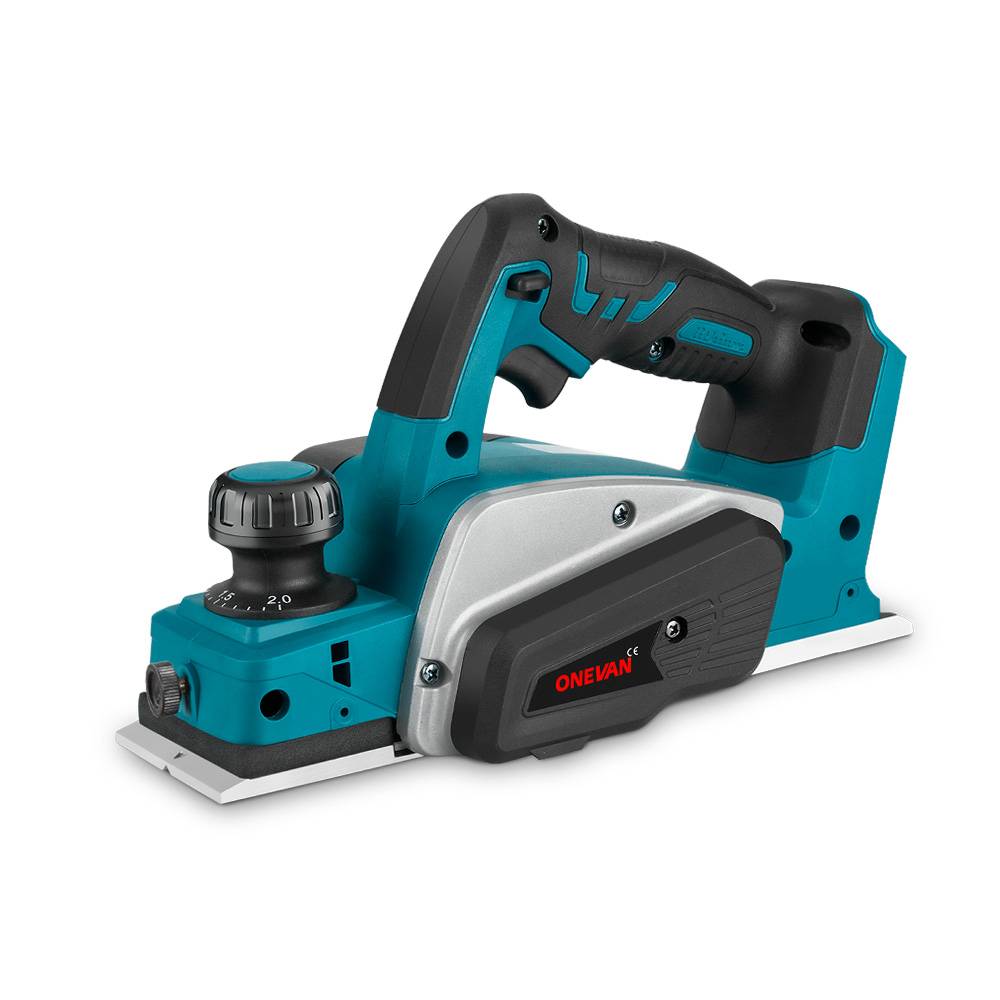Hedge trimmers, designed for cutting thin branches and twigs, are ideal for trimming various types of hedges and shrubs. Similarly, none of us can neglect the importance of this tool for small scale to big scale farms, and garden maintenance. Maintaining a sharp hedge trimmer is crucial for taking care of your garden. Not only does it ensure flawless cuts and improved performance, but it also extends the life of your tool. However, hedge trimmers can become dangerous if not used properly. These trimmers have powerful blades, capable of causing serious injuries.
Therefore, to avoid any mishap, it is essential for a beginner to learn how to sharpen a hedge trimmer. Today, we are going to show you how to sharpen your hedge trimmers? Basically, this is a simple guide where we shall take you through each step for your easy learning process.
1. Types of Hedge Trimmers
There are different types of hedge trimmers. Therefore, it is paramount to understand the basics of each trimmer to operate your tool effectively.
Gasoline Hedge Trimmers
Gasoline hedge trimmers are famous for their hardcore performance. They can easily handle thick branches. They are recommended for big yards, but they need frequent checking, including blade sharpening.
Electric Hedge Trimmers
Corded hedge trimmers weigh less and make less noise than gas trimmers. They are good enough for medium gardens, but their cords restrict movement, which is a significant disadvantage.
Battery-Operated Hedge Trimmers
If you do not want wire in your garden, these types of trimmers are ideal for small or medium-sized gardens. They require less maintenance than gasoline models, but they still sometimes need blade sharpening.
Consider ONEVAN 510mm Cordless Brushless Hedge Trimmer
|
Feature |
Description |
|
Function |
Trimming large bushes, managing large hedges, pruning small branches |
|
Ideal Use |
Small gardens, hedge trimming, awkward areas |
|
Blade Design |
Double Sided Dual Action Cutting |
|
Blade Material |
Carbon Steel |
|
Blade Length |
51 cm |
|
Cutting Capacity |
Up to with double sided dual action (information missing) |
|
Battery |
22900mAh |
|
Power |
2000W |
|
Motor |
Brushless |
|
Weight |
Medium |
|
Portability |
Cordless |
|
Stroke Rate |
7200 spm |
|
Equipment Type |
Double Knife |
|
Control Type |
Dual Knife Control |
|
Vibration Level |
2.5m/s² or less |
|
Sound Power |
84.3dB(A) |
|
Material |
Metal + ABS |
2. When Your Hedge Trimmer Needs Sharpening
Understanding when your hedge trimmer blades need sharpening is critical to maintaining their effectiveness.
Indicators That Your Hedge Trimmer Blades Are Becoming Dull
Inefficient Cutting: Struggling to cut through branches or leaving jagged edges.
Increased Effort: Needing to apply more pressure to make cuts.
Visible Damage: Nicks or dents on the blade edges.
Plant Damage: Tearing or bruising branches rather than clean cuts.
How Often to Sharpen Based on Usage
Frequent Use: Sharpen every 20-30 hours of use.
Moderate Use: Sharpen at the start and end of the gardening season.
Occasional Use: Check the blades before each use and sharpen as needed.
3. Preparation and Safety for Sharpening Your Hedge Trimmer
Before you start sharpening, follow these essential preparation steps to ensure safety and effectiveness.
Check The Manual
Follow-up: your hedge trimmer manual might have special instructions for sharpening your particular model. Consider this manual as a vital reference tool. Look for things like:
- The specific type of file or sharpener recommended - The manual might recommend a file that works best with your trimmer's blades.
- Sharpening angles - Some manuals might show you the exact angle at which you should hold the file while sharpening for the cleanest cut.
- Warnings or tips specific to your model - There could be particular warnings about things to avoid while sharpening your trimmer or any handy tricks the manufacturer recommends.
Clean The Blades
Before you sharpen, you want a clear shot at the metal. Here's how to clean the blades:
- Use a rag and silicone cleaner: Wipe the blades thoroughly with a rag (sprayed with silicone cleaner). When done, dirt, sap, and other gunk hindering proper sharpening will be eliminated.
- Focus on the teeth: Get in between the blades' teeth to remove any debris stuck there.
Power Down!
Ensure safety by preventing accidental activation . Always make sure the trimmer is completely off and disconnected from any power source before beginning any maintenance work. Here's how to make sure your trimmer is completely off:
- For electric trimmers: Unplug the trimmer from the outlet. Easy peasy.
- For battery-powered trimmers: Take out the battery. Make sure it's completely out and not partially inserted.
Protecting Yourself
Sharpening involves sharp blades and potentially flying metal shavings. You want to protect yourself:
- Safety glasses: While sharpening, always put on safety goggles that wrap around your eyes so that any metallic fragments do not get into the eye.
- Sturdy gloves: Leather or thick cloth gloves will protect your hands from cuts while you handle the sharp blades.
Aligned Teeth
Imagine sharpening a saw with uneven teeth - your cuts would be all wonky! Here's how to make sure the teeth are aligned:
- Close the blades: Carefully close the trimmer blades together.
- Use a screwdriver: Look down the length of the closed blades. If any teeth stick out further than the others, carefully nudge them back into line with a screwdriver.
Clamping The Trimmer
You don't want your trimmer bouncing around while you sharpen. Here's how to secure it:
- Find a Stable workbench: Make sure it's a solid surface that won't wobble.
- Use a vise: If you have a vise, clamp the trimmer blade securely in it.
- No vise? No problem! For improvised padding, wrap thick towel or rag around the trimmer handle and clamp it onto a workbench using a c-clamp. Just remember to clamp it around the base of not the blades.

4. Sharpening Your Hedge Trimmer With A Flat File
Sharpening with a flat file is an effective way to keep your hedge trimmer blades sharp. Here's a detailed breakdown of each step:
Step 1: Choosing The Right Tool
Successful sharpening requires careful selection of the right tool. In this case, your weapon of choice is a flat file; however, several factors should be considered before going to the hardware store. First and most importantly, prioritize comfort! You will use the file for an extended period, so pick a secure and comfortable one.
A good grip prevents hand fatigue and keeps you from accidentally dropping it, thus injuring yourself or breaking the blades. Second, consider grit—which is basically how rough its surface is." A heavily damaged or dulled blade calls for more aggressive treatment. Hence, when blades are in this condition, medium grit files (around 100 grit) should be used; their coarser texture effectively removes nicks and uneven metal, restoring the blade's basic shape.
However, if you're performing regular maintenance sharpening on blades that are in decent shape, a finer grit file (around 150 grit) is ideal. This finer texture hones the existing edge, maintaining its sharpness for continued clean cuts. So, remember to inspect the condition of your blades before sharpening.
Step 2: Focus Teeth of the Trimmer
Now you have a perfect file, let's focus on the teeth of the trimmer blade one by one. Pretend that you are sharpening a pizza slice, and that is the exact 45-degree angle you need to have right here. The bevel is a sloping edge on each tooth, carrying out the cutting action. Position your flat file at a 45-degree angle to this slanted surface to sharpen it effectively.
Remember, visualization is critical! If you find it helpful, imagine yourself slicing the slope with the flat file at that precise 45-degree angle. Once you've achieved the proper angle, technique comes into play. Forget sawing the file back and forth.
Instead, use long, smooth strokes with the file moving in only one direction, away from you. Think of sharpening a knife - you wouldn't saw the blade back and forth, would you? The same principle applies here. Maintaining consistent, single strokes ensures controlled sharpening and prevents unnecessary damage to the teeth.
Step 3: Maintain Uniformity
Sharpening is all about achieving uniformity across all the teeth. To ensure this, consistency is your mantra throughout the process. Once you've established your filing direction, which should be away from you, as mentioned earlier, religiously maintain that direction for every tooth.
This ensures that each tooth receives an equal amount of sharpening and prevents the creation of uneven edges. While maintaining direction, remember to ensure the file makes complete contact with the entire angle of the tooth as you slide it across. Imagine the slope as a ramp - you want the file to glide smoothly along the slanted surface for effective sharpening.
Step 4: Sharpening All Teeth One by One
With a firm grasp on the first three steps, you're now ready to tackle each tooth systematically. Remember those soldiers lined up in a row? Think of the teeth on your trimmer blade as your army of tiny cutting soldiers.
Now, it is time to approach one by one. Here is where the tooth-by-tooth comes in. Do each tooth separately, using techniques from steps 2 and 3 – sharpen each tooth with a single stroke away from you at a 45-degree angle. Begin at the tip and work down to the base of the blade, ensuring that all soldiers are well sharpened up to clean sharp edges.
As you progress from one tooth to another, do not forget about keeping that same 45-degree with consistency. This will guarantee that the blade is uniformly sharpened, giving a clean and exact cut when you employ your trimmer.
Step 5: Sharpen Both Sides
Cheer up! You have sharpened all the teeth on one side of the blade successfully. However, the task is still ongoing. Suppose a double-edged sword; you need your hedge trimmer’s blade to be sharp on both sides to work perfectly.
Now, reposition the trimmer in the vice with the other edge facing up. The process here is a mirror image of what you just did. Repeat steps two through four to conquer those teeth on the other side.
Maintain the 45-degree angle, use smooth single strokes away from you, and ensure the file makes complete contact with the entire angle of each tooth. Remember, consistency is key! On the other hand, repeating this process ensures that both edges of the blade are uniformly sharpened, resulting in balanced cutting and extended blade life.
Step 6: Fixing Rough Edges
The process of sharpening could let rough edges or small burrs. Such minor problems can cause discomfort during the use of these knives and also hinder their cutting efficiency. However, the whetstone is there to save you!
That is where the whetstone comes in. Gently slide the whetstone across each tooth’s sharpened edge. This process removes any ridge without scratches, leaving behind a polished and refined edge. Just think of your kitchen knife after being completely sharpened—this tool makes your hedge trimmer blades so shiny and sleek that there are no hiccups when you mow with them.
After sharpening , apply a thin layer of machine oil to the blades to protect them from corrosion and maintain their sharpness. That thin film of oil acts as an anticorrosion barrier, preventing the rusting of newly machined blades just as much as they will remain sharp, ready for trimming bushes at ease.
5. Sharpening Your Hedge Trimmer with a Rotary Tool
Step 1: Getting Ready for Your Rotary Tool
Imagine your rotary tool as a small power drill; it needs the right attachment for this job. You will need a grinding bit specifically made for sharpening hedge trimmer blades. This grinding bit works the magic during the sharpening process. Ensure that the grinding bit you select has a shank diameter of 3/8 inch to fit well in your rotary tool. When you have identified the correct grinding bit, fix it into your rotary tool following its manufacturer’s instructions.
Step 2: Focusing Your Grinding Bit
Now that you have put on your rotary tool with the grinding bit, let us concentrate on each individual tooth inside the trimmer blade. Let each tooth be a miniature saw blade. These “mini saw blades” will be sharpened by the grinding bit to give them clean cutting edges. It is crucial to move carefully along the side, or flanks, of each tooth. Use the smooth end of your grinder to gently roughen these surfaces, enhancing their ability to grip and cut through materials effectively.
Step 3: Perfection is Consistency
“United we stand divided we fall”, this holds true even for hedge trimmers! You want all teeth to be sharpened equally so that they cut smoothly and evenly through grasses and other plants. Once you have finished one side of one tooth then continue with all other remaining teeth using again that worn out grindstone that you hold between thumb and index finger—what did you say about rotating wheels? Ensure to adjust the guide according to the desired level of sharpness. Make consistent adjustments in both directions by maintaining equal pressure on the handlebars.
6. Care After Sharpening Hedge Trimmers
Proper aftercare ensures your hedge trimmer remains in top condition after sharpening.
Step 1: Clean the Blades
Remove any metal shavings or debris from the blades.
Apply a suitable lubricant recommended by the manufacturer of the blades to prevent rust and ensure smooth operation. Make sure to apply the lubricant evenly over the entire blade.
Step 3: Inspect for Damage
Check for any signs of damage or wear that may need professional attention.
Step 4: Test the Trimmers
Test the trimmers on a small section of hedge to ensure they are cutting effectively.
Step 5: Store Your Trimmer Properly
Store the trimmers in a dry, safe place to protect the blades from damage and corrosion.
7. When Should You Take the Hedge Trimmer to a Professional?
Even the most professional homeowner might require some assistance in keeping their hedge trimmers in optimal conditions. Here are a few indicators that your hedge trimmer needs professional maintenance:
1. When Sharpening Fails
You’ve taken a file or a rotary tool to your blades, yet your cutter still doesn’t cut neatly. This means you should not only sharpen it as maybe it’s too blunt from extensive use or there is another underlying factor at play. If sharpening fails to give back the crispness of cuts, professional servicing may be considered for evaluation on whether the blades need replacing or there is something else hindering performance.
2. Strange Sounds from Trimmer
Your hedge trimmer makes its usual whirring noise when everything is working properly but if all of sudden it starts producing loud clanging, grinding or screeching sounds then know that’s alarming! Such strange noises may indicate internal issues with gears, motor or other components. Don’t take chances; different sounds signal the need for professional intervention to diagnose and fix the problem before escalation.
3. Trouble In Starting the Hedge Trimmer
You pull the cord or press the start button, but there’s no response from your hedge trimmer anymore. If this persistently starting issue becomes habitual, invite an expert over. For instance, if you have trouble starting up your machine because of a faulty spark plug, carburetor malfunctions and sometimes electric problems can be responsible for this hitch as well as others that hinder successful starting. A specialist will identify the problem and get your trimmer back to running smoothly again.
4. Your Trimmer Needs Spare Parts
Hedge trimmers have numerous parts that wear out with time or even break due to accidental knocks or falls. Should you come across broken pieces or those that are so worn out on your cutter, it’s better to have it repaired by an expert. Changing these parts requires knowledge and tools of fitting the right size and design for them to be effective; a professional can best advice on the damage, the correct replacements as well as proper installations for safety and efficient operation.
5. A Preventative Tune-Up
Even if you haven’t noticed anything wrong with your trimmer yet, periodically seeking professional servicing will prevent potential issues from escalating. In other words, this should be seen as a form of prevention and maintenance. A pro can inspect all the components, clean and lubricate moving parts, identify any potential issues before they turn into bigger problems. This will enable you enjoy your trimmer longer without experiencing major hitches or having to buy another one.
6. Take professional Help
Tasks such as blade sharpening or part replacement may be involved in hedge trimmer maintenance. If there is any doubt about these tasks at all do not hesitate to consult someone who knows better. Hedge trimmer blades are sharp and could injure when handled wrongly while some repairs might require specific tools or knowledge herein lies safety first!
Consequently, contacting someone knowledgeable on how to handle such matters will ensure that nothing goes wrong during maintenance process whether it is safe use of equipment or dealing with hazardous materials involved again provide support safely or effectively.
8. Conclusion
To keep your garden healthy and looking good, it is important to ensure that your hedge trimmer blades are sharp. This guide will help you in maintaining the best performance of your trimmer which offers neat and clean cuts whenever required. Regular maintenance not only extends the life of your tool but also makes your gardening efforts more efficient and enjoyable.
Those who prefer professional assistance or come across complicated issues should contact professionals directly. Best wishes for gardening endeavors!
9. FAQ
1. What is the best tool to sharpen a hedge trimmer?
At home, there are two basic ways through which a hedge trimmer can be sharpened.
Flat file: This is a conventional yet practical approach to blade sharpening. It requires some skills, although it is a good option for DIYers.
A rotary tool with a grinding bit: This power tool method may be faster and more accurate than flat filing, but it requires care to avoid damaging the blades.
2. How to sharpen a hedge trimmer by hand?
This is a simple guide on how to use a flat file to sharpen:
Choose a flat file with a comfortable handle and the appropriate grit (medium for dull blades or fine for maintenance).
Hold the trimmer in place with the blade facing up using a clamp.
Put the 45-degree angled field against each tooth’s bevel side.
Use the file to make long, smooth strokes in one direction only (i.e., away from yourself).
Repeat the process for all teeth before turning over the trimmer to sharpen the other side.
Use whetstone to smoothen any left burrs after filing.
3. Is it worth sharpening hedge trimmers?
Of course! If well-sharpened, they make neat cuts as opposed to ragged edges, making trimming easier. The machinery also experiences less strain on its motor because sharp blades reduce friction, thereby prolonging their survival period.
4. How to sharpen trimmer blades at home?
These methods involve honing trimmers at home using flat files or rotary tools with grinding bits. Choose what you would feel comfortable using; safety should be the first priority.
5. How do you sharpen clipper blades with aluminum foil?
We cannot recommend resharpening clipper blades using aluminum foil. Aluminum foil does not provide enough power for good honing; consequently, it can ruin the sensitive edges of clipper blades. A sharpening stone or professional service would be better.
6. Does aluminum foil sharpen blades?
Aluminum foil is not a good material for sharpening blades. It is too soft, so it does not effectively remove metal and can bend or blunt the blade more.
7. How can you sharpen a blade without a sharpener?
If a blade does not have a dedicated sharpener, a flat file or whetstone can be used to hone it. These hand tools require some skill, but they usually work well when properly applied.
8. How do you sharpen a blade fast?
Sharpening should always be done carefully and accurately, even though a rotary tool with a grinding bit may be faster than a flat file. Take your time honing to avoid spoiling the blades.
9. What tool is used to sharpen blades?
Most sharpener tools include:
Flat File: This versatile tool can be used for various blade types, including hedge trimmers.
Whetstone- A fine-grained stone used to polish and smooth out an edge after being filed using a file.
Sharpening Stone - Stone used for sharpening different types of blades, including whetstones and oil stones
Grinding Bit –This is an attachment on any rotary tool meant specifically to make it sharper.

